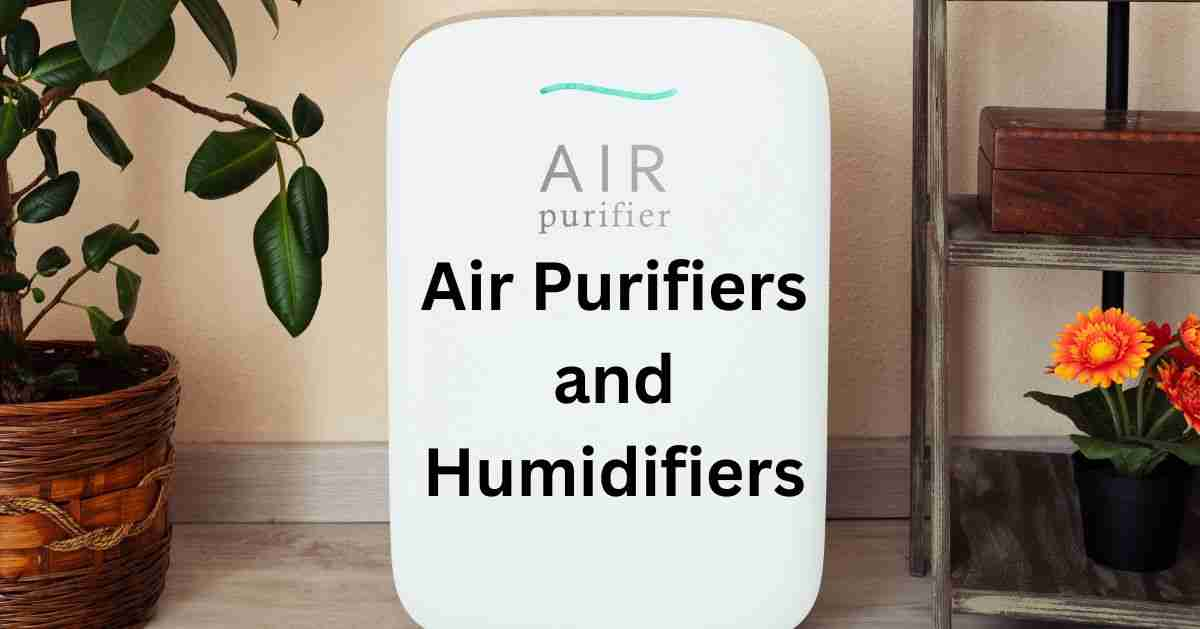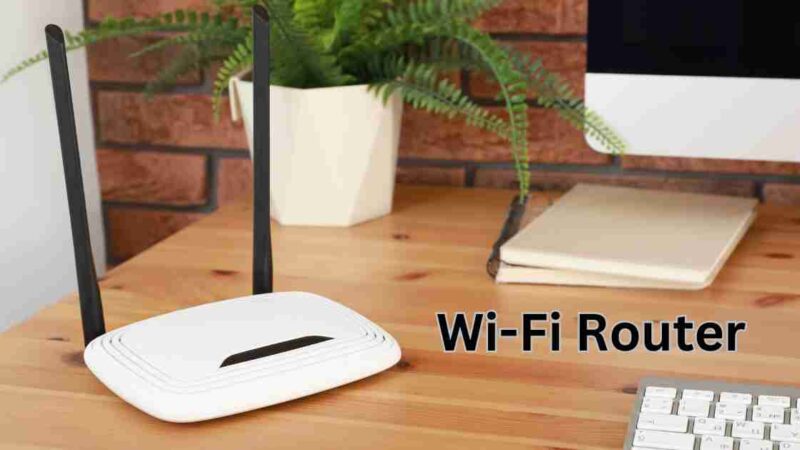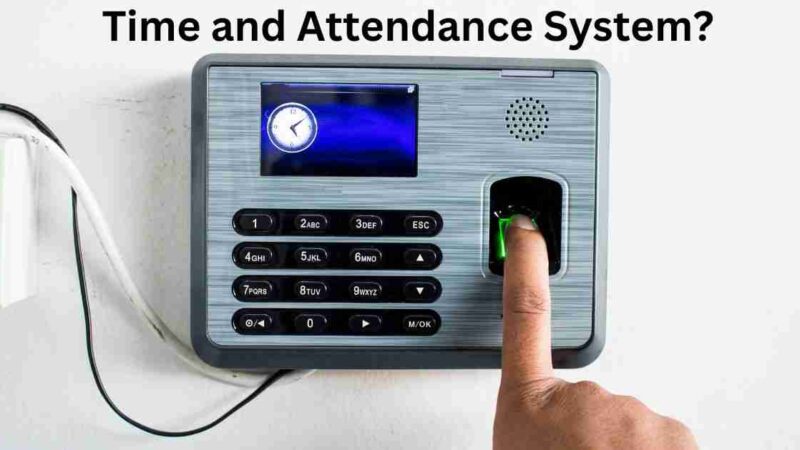What Are the Differences Between Air Purifiers and Humidifiers?

Air purifiers and humidifiers are devices crafted to enhance indoor air quality at home or work. Although they both boost air quality, their methods and purposes vary significantly. This guide elucidates the disparities between air purifiers and humidifiers, helping you choose the one that aligns with your requirements and exploring their advantages in a workplace setting.
Understanding Air Purifiers: How Do They Work?
An air purifier is a device that improves indoor air quality by getting air through a channel and really catching and taking out toxins and allergens. These filters are proficient at trapping particles like dust, pollen, pet dander, smoke, and other minute contaminants. The most common filter types employed in air purifiers include HEPA filters, activated carbon filters, and ultraviolet (UV) light filters. HEPA filters, renowned for their effectiveness, can capture particles as tiny as 0.3 microns. When filtered, the air is delivered once again into the room, making it cleaner and more breathable.
Air purifiers prove particularly advantageous in workplaces where employees grapple with allergies or asthma, offering relief by mitigating symptoms. They also excel at dispelling odours and enhancing overall workplace air quality. In settings with elevated dust levels or other pollutants, such as factories or construction sites, air purifiers can substantially enhance the environment.
What Is the Purpose of a Humidifier?
The primary purpose of a humidifier is to raise the humidity or moisture level in the air within a confined space, such as a room or workspace. By emitting water vapour or steam, humidifiers combat dry air conditions that often occur during the winter or in arid climates. This added moisture can alleviate various discomforts, including dry skin, chapped lips, static electricity, and respiratory issues. Maintaining an ideal humidity level of around 30% to 50% in indoor environments helps create a more comfortable atmosphere for occupants. Moreover, humidifiers can assist with diminishing the spread of organisms and diseases and dealing with cold and influenza side effects by working with nasal congestion.
[Also Read: Conference Room Setup: Key Considerations for Effectiveness]
Distinguishing Air Purifiers from Humidifiers: An In-Depth Comparison
Indoor air quality plays a crucial role in our overall well-being. Two common devices that people use to enhance the air quality in their homes are air purifiers and humidifiers. While they both contribute to creating a healthier indoor environment, they serve distinct purposes and operate differently. In this article, we will investigate the differences between air purifiers and humidifiers, supporting you in pursuing very educated decisions custom-fitted to your one-of-a-kind requirements.
Air Purifiers: Clearing the Air
Air purifiers are designed to tackle air pollution at its source. They work by drawing in air from the environment and then passing it through a series of filters or purification mechanisms. These filters catch and eliminate airborne particles, allergens, and pollutants. Here’s how air purifiers work:
Filtration: The core component of an air purifier is its filter. The most common type of filter used is a High-Efficiency Particulate Air (HEPA) filter, known for its exceptional particle-capturing abilities. HEPA filters have the capability to capture particles as tiny as 0.3 microns, encompassing dust, pollen, pet dander, smoke, and even certain microorganisms.HEPA channels have the ability to catch particles as small as 0.3 microns, including dust, pet dander, smoke, and, surprisingly, certain microorganisms.
Purification: The contaminants are trapped as the air passes through the filter, and the purified air is released back into the room. This process operates continuously, effectively diminishing the abundance of allergens and aggravations in the air, consequently giving help from side effects and improving by and large prosperity. helps maintain a cleaner and healthier air quality indoors.
Health Benefits: Air purifiers are particularly significant for people with responsive qualities, asthma, or respiratory issues. They have the ability to considerably diminish the presence of allergens and aggravations in the air, offering help from side effects and contributing to a general improvement in health.
Humidifiers: Adding Moisture to the Air
Humidifiers, on the other hand, are designed to increase the moisture or humidity level in a room. They work by emitting water vapour or steam into the air, effectively raising the humidity. Here’s how humidifiers operate:
Moisture Emission: Humidifiers have a water reservoir and mechanisms to disperse moisture into the surrounding environment. There are different types of humidifiers, including evaporative, ultrasonic, and steam, each with its way of emitting moisture.
Benefits: Humidifiers are primarily used to combat dry air conditions, which can be expected during winter when indoor heating systems tend to dry out the air. They assist in alleviating problems like dry skin, parched throats, sinus congestion, and static electricity.
Comfort: Increasing indoor humidity levels can create a more comfortable living environment, particularly when the air is dehydrated. Moreover, it can contribute to the further development of best quality and a diminished risk of respiratory inconvenience.
Choosing the Right Device
Now that we’ve examined how air purifiers and humidifiers function, the next step is to determine which one suits your needs. Here are some factors to consider:
Health Concerns: If you or your family members suffer from allergies, asthma, or respiratory issues, an air purifier is a more appropriate choice, as it can significantly reduce airborne allergens and pollutants.
Dry Air: If the primary issue is dry air causing discomfort, then a humidifier is the better choice. It can help maintain an optimal humidity level for comfort and health.
Combination: In some cases, using both devices may be necessary. For example, during the winter, when heating systems dry out the air, you can use a humidifier to add moisture and an air purifier to remove any allergens or contaminants.
Types of Air Purifiers: Choosing the Right One for Your Needs
Maintaining a healthy living environment hinges on indoor air quality. Subsequently, air purifiers have become imperative apparatuses in various families, really dispensing with contamination, allergens, and toxins from the air. However, not all air purifiers are the same. There are various types of air purifiers, each designed to target specific airborne particles and pollutants. Inside this piece, we will dig into the different assortments of air purifiers, helping you choose the most appropriate one to meet your requirements.
1. HEPA Air Purifiers: Capturing Particles with Precision
High-efficiency particulate Air (HEPA) purifiers are among the most popular and effective types of air purifiers. They are known for their exceptional ability to capture small airborne particles, making going with them an incredible decision for allergy sufferers and those worried about overall air quality.
How HEPA Air Purifiers Work:
- HEPA filters are made of fine fibres that create a dense web-like structure. These channels can trap particles as small as 0.3 microns, including dust, pet dander, mould spores, and, surprisingly, a few microscopic organisms.
- Air is drawn into the purifier, passes through the HEPA filter, and the captured particles are trapped. Clean, purified air is then released back into the room.
2. Activated Carbon Air Purifiers: Eliminating Odors and Gases
Activated carbon air purifiers are designed to target odours, gases, and volatile organic compounds (VOCs). They work through a process called adsorption, where chemicals adhere to the porous carbon surface.
How Activated Carbon Air Purifiers Work:
- Air passes through the activated carbon filter, which has a large surface area with tiny pores.
- Gases and odorous substances in the air are attracted to the carbon surface and become trapped within the filter.
- Clean, odour-free air is released back into the room.
Activated carbon purifiers are particularly useful in kitchens, bathrooms, and areas with strong odours.
3. UV-C Air Purifiers: Battling Microbes with Ultraviolet Light
UV-C air purifiers utilize ultraviolet (UV) light to kill or inactivate bacteria, viruses, and mould spores. They are commonly used in healthcare settings and can help maintain sterile environments.
How UV-C Air Purifiers Work:
- UV-C light is emitted within the purifier, and as airborne microbes pass through the unit, they are exposed to the UV-C light.
- The UV-C light damages the DNA or RNA of the microbes, rendering them unable to reproduce and causing their destruction.
- Clean, microbe-free air is then circulated back into the room.
UV-C purifiers are highly effective at disinfecting the air but may not capture particulate matter like dust or pollen.
4. Ionic Air Purifiers: Using Charged Ions to Remove Particles
Ionic or electrostatic air purifiers release negatively charged ions into the air. These ions attach to airborne particles, giving them a negative charge. The particles are then attracted to positively charged plates or surfaces within the purifier.
How Ionic Air Purifiers Work:
- Ionic purifiers release negatively charged ions into the air, which attach to particles like dust, smoke, or allergens.
- The charged particles are drawn to positively charged plates or surfaces inside the purifier, effectively removing them from the air.
- Clean air is released back into the room.
While ionic purifiers can be effective at removing particles, some concerns exist regarding the production of ozone, a potential byproduct of this technology. It’s essential to choose models with low ozone emissions if you opt for an ionic purifier.
5. Ozone Generators: Neutralizing Odors and Microbes
Ozone generators release ozone (O3) into the air. Ozone can neutralize odours and kill certain microorganisms. However, it’s critical to exercise caution with ozone generators, as ozone can be unsafe in high concentrations.
How Ozone Generators Work:
- Ozone is released into the air, where it reacts with odours, gases, and microbes.
- Ozone molecules break down and neutralize these substances.
- Clean air, with reduced odours and microbes, is released back into the room.
Ozone generators should be used sparingly and in unoccupied spaces to avoid overexposure to ozone, which can irritate the respiratory system.
6. Electronic Air Purifiers: Combining Filtration and Electrostatic Charge
Electronic air purifiers use a combination of filters and electronic charges to capture particles and pollutants. They can be effective at removing airborne contaminants.
How Electronic Air Purifiers Work:
- Air is drawn through a pre-filter that captures larger particles like dust and hair.
- The remaining air passes through an ionization chamber, where it is charged with negative ions.
- Charged particles are then attracted to positively charged plates, effectively removing them from the air.
- Clean, purified air is released back into the room.
7. Photocatalytic Oxidation (PCO) Purifiers: Targeting VOCs and Pathogens
Photocatalytic oxidation (PCO) purifiers use UV light and a catalyst, typically titanium dioxide, to break down and neutralize pollutants like VOCs and airborne pathogens.
How PCO Air Purifiers Work:
- UV light activates the catalyst on the purifier’s surface.
- When pollutants come into contact with the catalyst, they are oxidized and neutralized.
- Clean air, free of VOCs and pathogens, is released back into the room.
PCO purifiers are effective at addressing chemical pollutants and some biological contaminants.
8. Hybrid Air Purifiers: Comprehensive Air Purification
Mixture air purifiers combine different advancements, like HEPA filtration and UV-C light, to provide thorough air purification. These purifiers offer a broader range of air-cleaning capabilities.
How Hybrid Air Purifiers Work: Once purified, the air is released back into the room, rendering it cleaner and more breathable.
- Air passes through multiple filtration and purification stages, targeting different types of contaminants.
- These stages can include HEPA filtration for particles, activated carbon for odours, and UV-C light for microbes.
- Clean air, thoroughly purified, is released back into the room.
Hybrid purifiers are suitable for those who want comprehensive air cleaning.
[Also Read: What are the Key Components of a Time and Attendance System?]
Choosing the Right Air Purifier
While choosing an air purifier, consider your particular necessities and the sort of foreign substances you need to address. Additionally, assess the Clean Air Delivery Rate (CADR) and the purifier’s coverage area to ensure it matches the size of the room where it will be used.
Whether you’re looking to reduce allergens, eliminate odours, disinfect the air, or target specific pollutants, there is an air purifier type designed to meet your requirements. With the right choice, you can significantly improve the indoor air quality in your home or workspace, establishing a better and more agreeable climate for you as well as your friends and family.
Conclusion
Air purifiers and humidifiers play distinct roles in improving indoor air quality. Air purifiers have some expertise in taking out poisons and allergens, making them appropriate for sensitivity victims and those with respiratory issues. Conversely, humidifiers focus on adding moisture to dry indoor air, alleviating problems like dry skin and static electricity. To select the right device, consider your specific needs, whether health-related or due to dry air conditions. In some cases, a combination of both devices may be advantageous. Various air purifier types cater to specific contaminants, ensuring a healthier and cosier indoor environment for you and your family.





